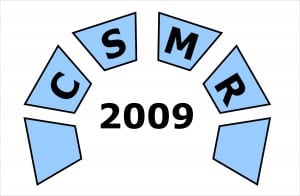 Guten tag.
Guten tag.
How embarrassing. The weather in Kaiserslautern is bad, I’m an Englishman…. and I don’t have an umbrella.
But at least the Fraunhofer IESE Centre is a wonderful environment. Which leads me to quickly express my admiration of the German approach to technical research and development. Briefly, there are four “actors” in their setup: the universities and industry, which scarcely need elaborating on, are two of them. The other two exist in-between these other players. The Max-Planck institutes are outlets of basic research funded mostly by the state. The Fraunhofer institutes are centres of applied science that are mostly funded by contract work. Look them up to learn more.
Onto the conference itself. Today, the keynote was delivered by Dieter Rombach. He argued that when software engineering is being taught, too scientific an approach is taken, and also that people are not sufficiently versed in software engineering principles.
Many maintenance tasks, he argues, are able to be anticipated, and yet they are not prepared for. For example, if you develop software that is dependent upon the CPU, why should you not develop it in a way that makes it as simple as possible to adapt to a new CPU? When developers in the 1960’s and 1970’s developed systems and saved a few bytes by storing the year as two digits, their systems broke when the year 2000 arrived: the shame is, not on them for anticipating it, but on us for not learning from their mistakes.
To prepare for maintenance, Rombach advocates these principles:
- An adroit use of the fundamentals: e.g. divide and conquer, traceability
- Use of software product lines
- Empirically proven best practices
Also worth mentioning is Carola Lilienthal’s paper on analyzing large-scale architectures and suggestions for keeping their complexity under control. Her approach is to compare the intended architecture of the system (e.g. layered architecture) to the actual architecture derived from code analysis. By borrowing from cognitive psychology her paper proposes three aspects for architectural complexity to be applied: modularity, ordering (whether the relationships between elements form a directed, acyclic graph), and pattern conformity. A recommendation is made to begin with a reference architecture and progress to a layered architecture implementing the interfaces as the system grows.
Comments are closed.